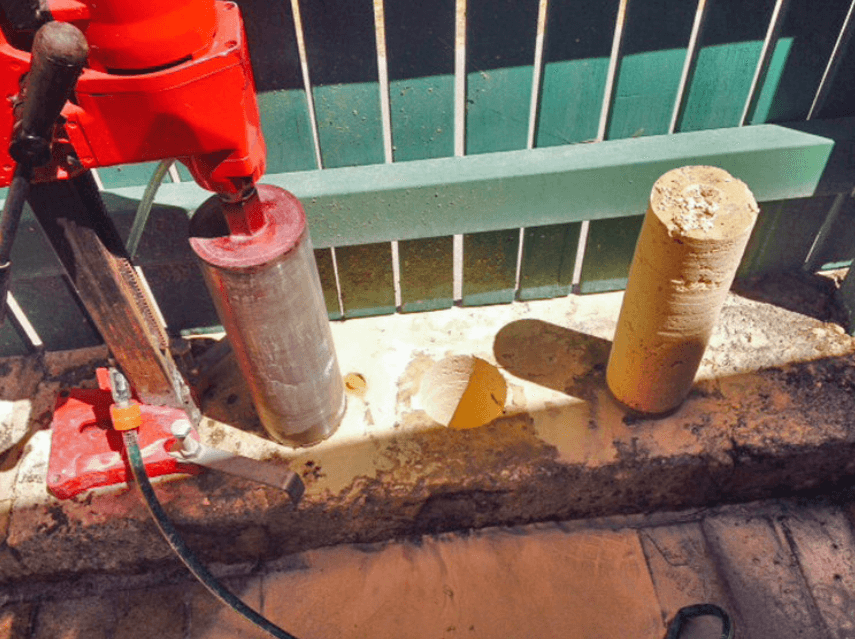Can you Install Fencing or Gates into Brick Paving or onto Poured Concrete?
This is a very common question and something that we’re frequently asked especially when people are undertaking DIY fencing or DIY gate renovations, or landscaping projects. The simple answer is YES – we can absolutely install fencing and gates into brick paving or concrete.
There are a couple of different ways this can be done which will be explained below. But first, it is important to understanding a couple of things.
Whenever you are installing fencing or gates it is extremely important that the foundations or footings of the posts are appropriate. The appropriate size of a post footing is dependent on several factors, including the load it will bear, the site conditions (i.e. how windy the area is), and the type of soil in the area (sandy soil vs firm ground).
As a rule of thumb, we want the post to be at least 600mm under the ground with a substantial concrete footing. The details of a typical post footing can be found in our brochure. It is extremely important, especially when installing gates, that the footing size is correct as this will ensure the gates do not drop or sag over time.
When installing fencing or gates into paving or concrete, there are two main installing options:
- Core drilling into paving or concrete.
- Bolting post with a base plate into the finished flooring.
Option 1: Core drilling through finished paving or concrete.
The preferred option when installing fencing or gates into paving or concrete is to use a core drill. The core drill is a highly efficient and powerful tool for boring holes through reinforced concrete, blocks, brick, masonry and stone.
Core drilling is one of the most effective, non-vibratory ways of drilling through reinforced and non-reinforced concrete or masonry substrates. It creates holes without causing aggressive demolition or too much strain. It is always preferable to use a Diamond tip core bit as this ensures a neat and clean hole through all types of reinforced and non-reinforced concrete, block work and bricks.
The core drilling procedure is most effective in getting precise and accurate circular cuts through varied concrete surfaces.
 Once the core hole is drilled, sand is removed to the required depth, the post is inserted and the concreted poured in place. To ensure a seamless job is achieved, post hole covers can be added to hide the core hole and ensure a clean finish is achieved.
Once the core hole is drilled, sand is removed to the required depth, the post is inserted and the concreted poured in place. To ensure a seamless job is achieved, post hole covers can be added to hide the core hole and ensure a clean finish is achieved.
Option 2 – bolting post with a base plate into paving or concrete.
Sometimes core drilling is not possible or appropriate, these situations can include,
- Installing fencing on top of a timber deck,
- Installing into tiles (tiles can easily chip when core drilled)
- Where there is a strong chance of existing underground services.
In these situations, we recommend a post with a base plate be used. When using this method, it is important to ensure the surface we are bolting a post into is strong enough to support the fencing or gates we are installing. An array of fixing procedures can be used and wherever possible a construction adhesive like chemi-anchor will be used.
As you can see, it is possible to install fencing and gates into brick paving or concrete. In fact, it is our preference that you install paving or concrete first, especially with pool fencing, as the finished floor level is then known and we can ensure the installed fence meets with pool fencing height requirements as per AUS/NZ 1926.1 -2012.
If you have any questions regarding the best way to install fencing or gates for your project, please do not hesitate to contact us or arrange a site visit from one of our sales consultants so they can provide you with a no-obligation quote.